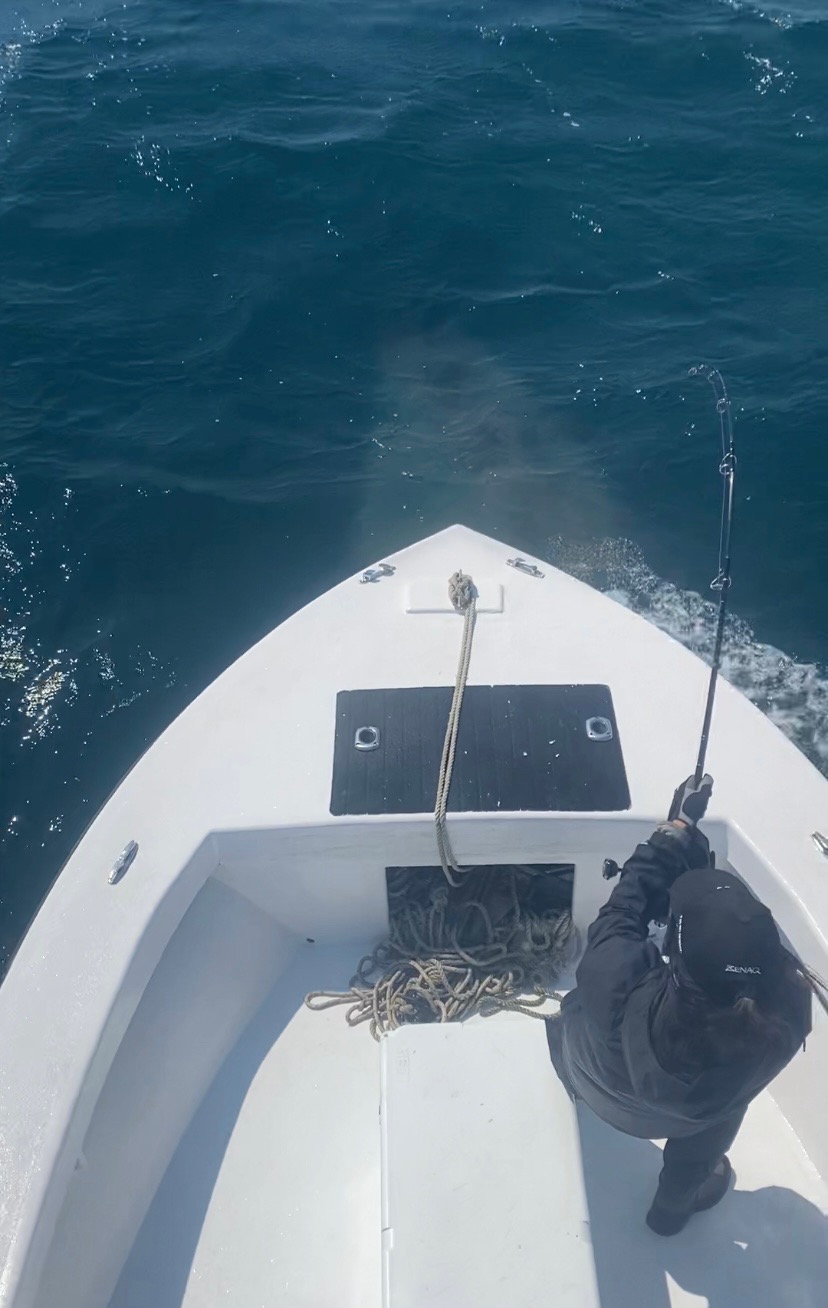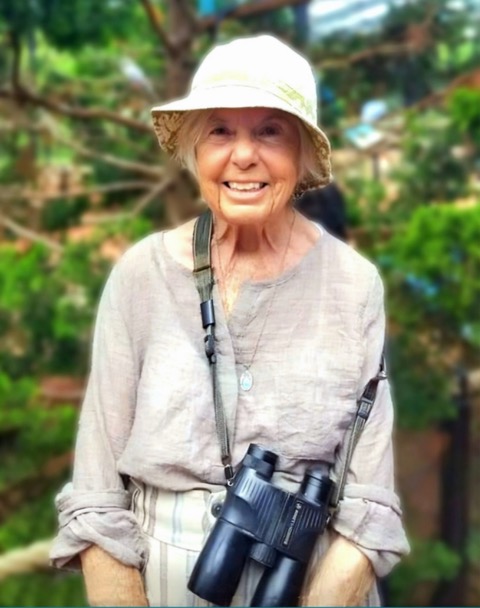A Beachcomber’s View: Olives and Augers, Wentletraps and Worm Shells
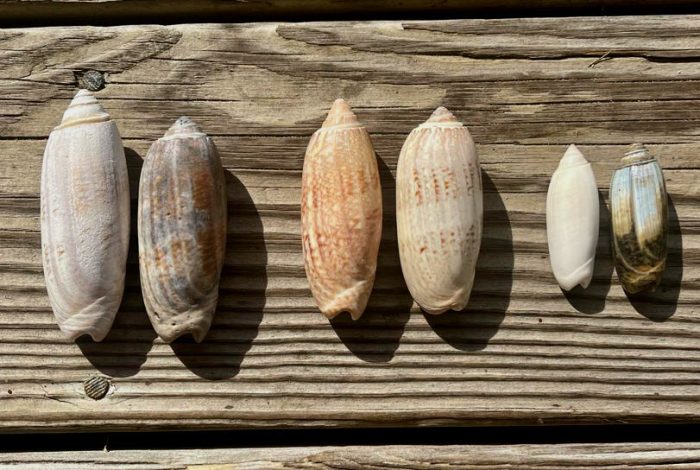
As the seasons change, so do the beachcombing conditions and finds.
During the winter months, it seems like bigger shells and chunkier items like driftwood tend to wash up, compared to the summer months, when smaller shells and smaller piles of debris are the norm.
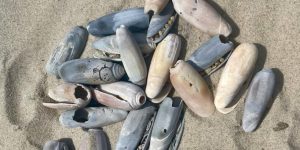
As a beachcomber, one of my signs of summer is the abundance of olive and auger seashells. Other than these shells being cylindrical in shape, they really don’t have much in common. I seem to find these two types of shells much more frequently in the summer than during the winter. During the summer, the water tends to be more Caribbean blue in color, and I can often spy these smaller shells rolling up and down the sand inside the shore break waves.
Olive shells are easier to find than auger shells because they are much bigger. There are three types of olive shells that can be found on Hatteras Island: the lettered olive, the brown olive, and the smallest of the three, the variable dwarf olive.
The lettered olive is named after the zigzag markings that resemble letters in the alphabet, and it is also South Carolina’s official state seashell.
The brown olive looks very similar to the lettered olive, but the tip of the seashell known as the spire is shorter on the brown olive shell. The coloring is not pronounced on the brown olive, and the pattern on the brown olive is also more reticulated as opposed to the zig-zag pattern on the lettered olive.
It is very common to find olives with their spire broken, and their coloring changed from a long time of being buried in the sand or exposed to the sun, and it makes it harder to identify which variety one has collected. The broken olive shells, however, make an excellent source for crafting and jewelry making.
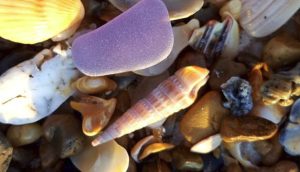
Lettered and brown olive shells are similar in size, with the North Carolina state record for the lettered olive measuring over 3.5 inches. The female lays eggs that float in the water, and once hatched, the young freely swim in through the sea until they hopefully land in an enriched coral reef of some kind. They are carnivore shells that feed on bivalves like scallop shells, and they can be found living in deep waters.
The smallest of the olive shells, measuring a maximum length of half an inch, is the variable dwarf olive shell. Like its bigger “cousins,” the variable dwarf olive is also a carnivore, but lives in much shallower waters, like those found on the sound side. The females lay eggs on hard services, and the young crawl away after hatching. There are six varieties of this type of dwarf olive shell living off of the coastal waters of North Carolina.
Auger shells, like olive shells, are gastropod shells and are also carnivorous. Unlike the two bigger olive shells that live in deep waters, all auger shells live in shallow waters off the coast and in the sound. There are two main species of auger seashells that occupy North Carolina’s coastal waters; the eastern auger and the concave auger. The North Carolina record for the biggest eastern auger measures 2.25 inches and was discovered off the coast of Ocracoke.

The most noticeable difference in olive shells compared to augers is that olive shells are wider and uniformly cylindrical, whereas the auger is more of a cone-shaped shell that is wider at the bottom and tapers to a skinner point at the spire.
The auger shells also have whirls which are raised and ridged, and which go down the length of the shell. Auger shells have an operculum, which is a small foot-like piece attached to the opening of the shell. The operculum is used to help the shell move around, protect it from dangers, and to capture food. The olive shells lack an operculum.
There are also the very popular wentletrap seashells, which many of my beachcombing friends value as a prized find, and the precious wentletrap shell found in the Pacific Ocean is considered one of the most beautiful shells in the world by collectors. There are several varieties of wentletrap shells that can be found off the Carolina coast, and the brown band and the angulate wentletraps are two of the more common types.
Compared to augers, wentletraps are smaller in size, but have pronounced details. Wentletraps have ribs along their whorls, giving them more texture than the augers. Similar to the augers, they are carnivores, but wentletraps eject a purple substance that is believed to make their prey immobile. Wentletraps also live in shallow waters like augers, and have an operculum.
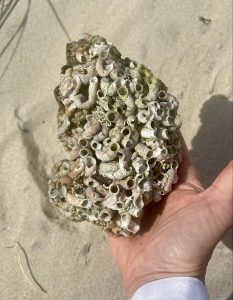
One of my personal favorite shells that is closely related to the auger shell is the worm snail seashell.
This shell starts off shaped like an auger, with ridged whorls, but then grows loose and begins to coil without any sort of direction. It often looks like a big cluster of macaroni pasta shells instead of actual seashells.
These tiny shells can all fit into the palm of one’s hand, and often get overlooked because of their size, but to me, that’s what makes them so special. Finding a tiny treasure like one of these shells in a massive pile of bigger shells always seems like a major win to me. Maybe that’s why beachcombers hold the teeny tiny wentletrap and other smaller species such as trophy finds, because it’s like finding a needle in a haystack at times.
Seeing these lovely little shells roll up and down the surf as I walk along the shore is something I don’t typically see during the winter, and to me, sings a shell song that summer is upon us.
About the Author: Kristin Hissong is a North Carolina native, a UNC Charlotte graduate, an Outer Banks resident of nearly 20 years, and a dedicated, “professional beachcomber.” She has spent more than 20,000 hours walking on both our local shores and shorelines around the Eastern Seaboard, and has collected thousands upon thousands of items from the Atlantic Ocean.
For the past decades or so, she has been beachcombing on Hatteras and Ocracoke Islands every day, collecting both treasures and trash on her routine expeditions. From typewriters to coffee makers, fishing rods to recliners, if you name it, there’s a good chance she has seen it washed up, and has hauled it back to her collection, or to the closest dumpster.






